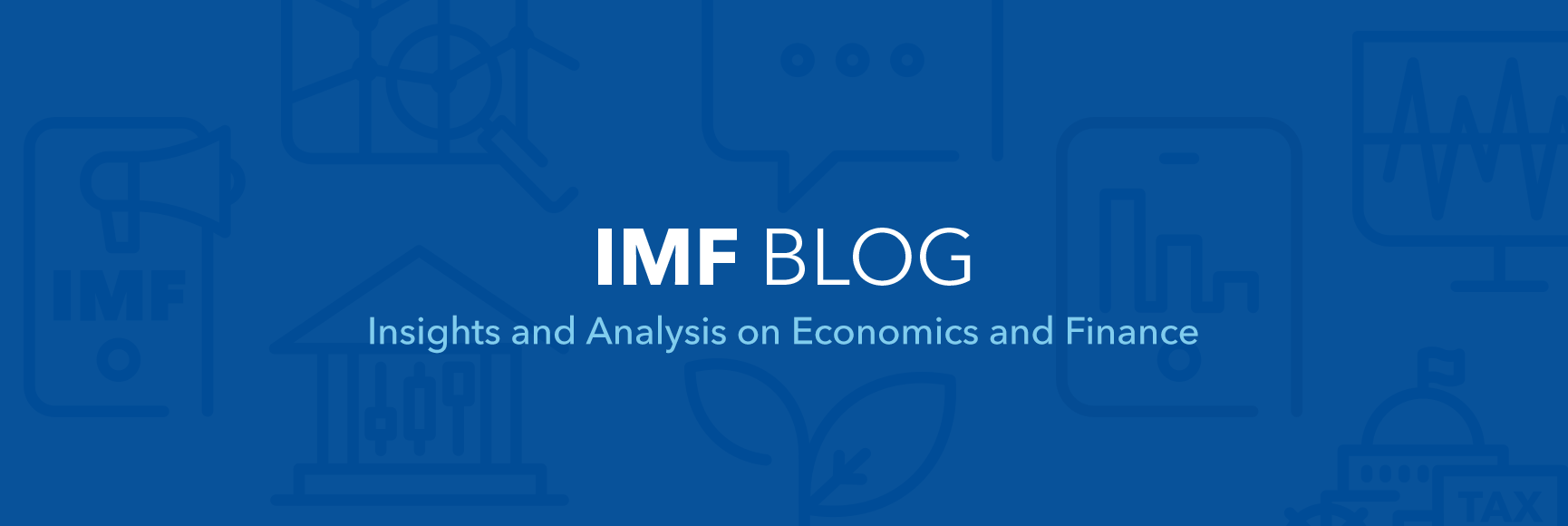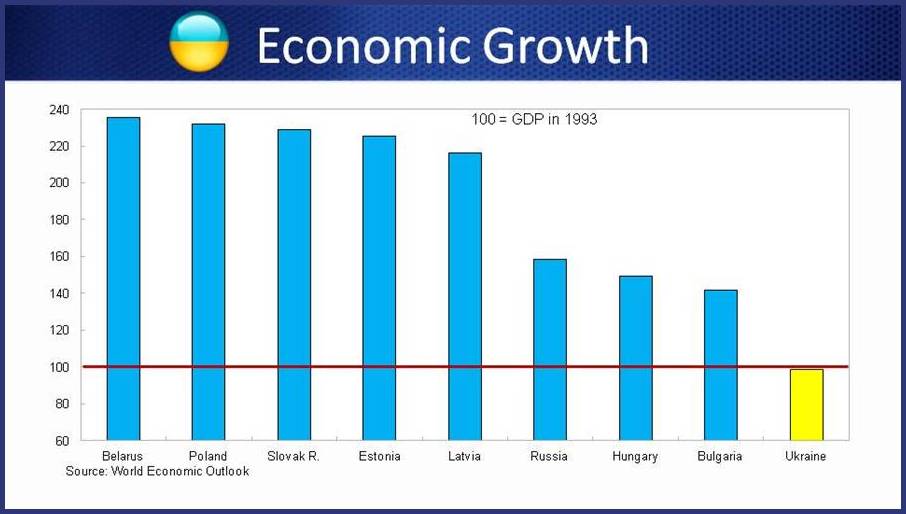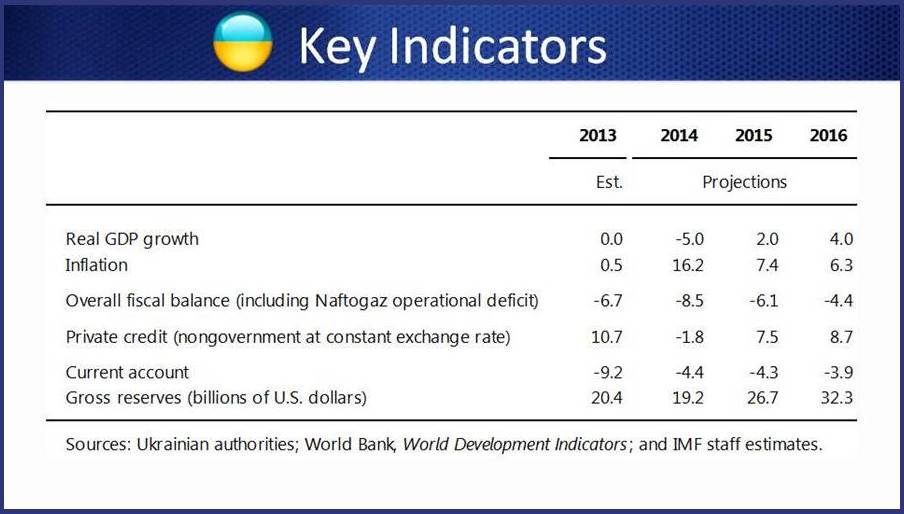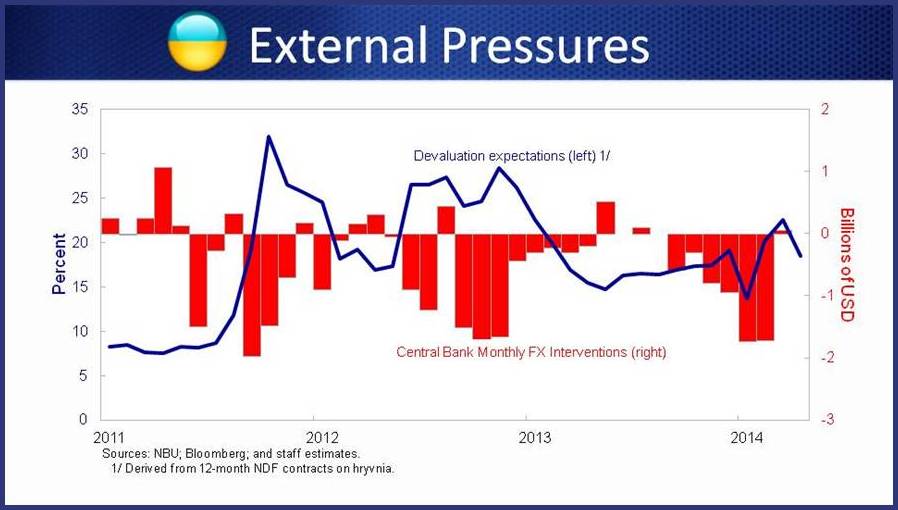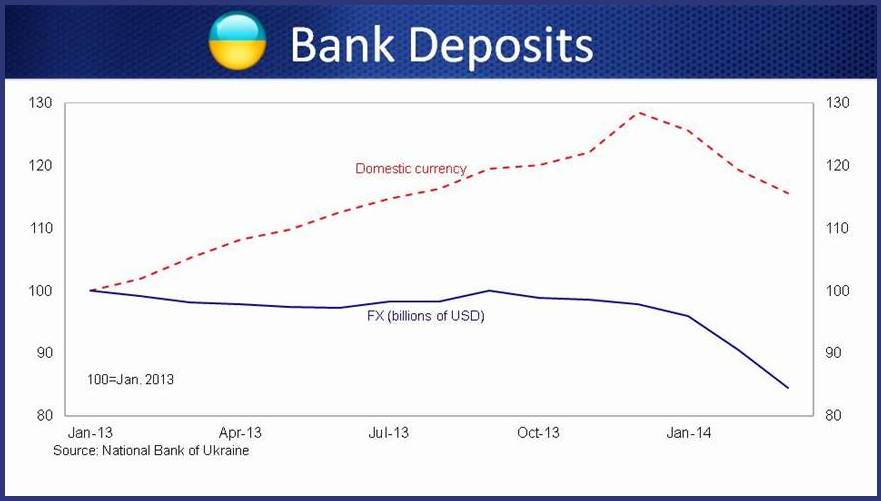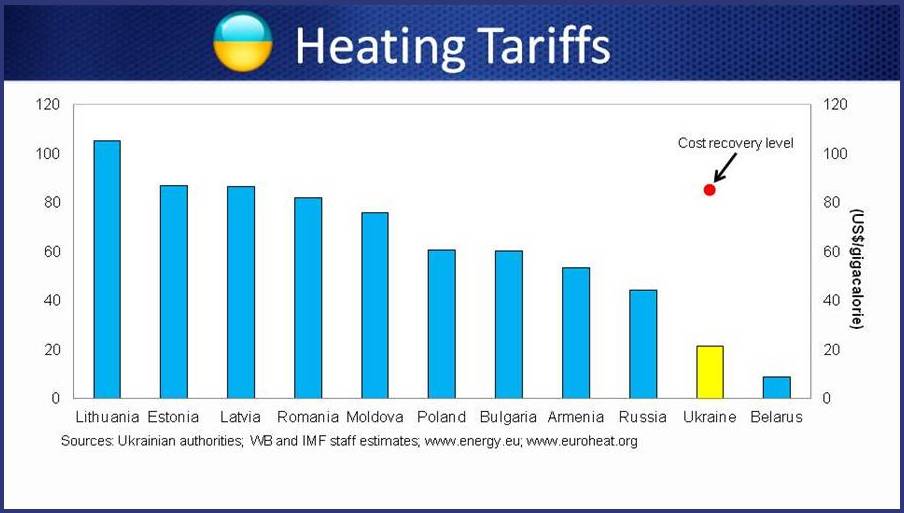(Version in Русский and Español)
Even before geopolitical tensions unleashed currency flight, bank deposit withdrawals and surging risk premiums, Ukraine faced serious challenges. The crisis there has been years in the making, reflecting deep structural problems that left it vulnerable to periodic funding shortfalls and near the bottom of transition country league tables. Thus, any program to tackle the immediate crisis in Ukraine must inevitably come to grips with this legacy.
Priorities in a difficult setting
Ukraine’s recently unveiled economic adjustment program, with financial support from the Fund and the wider international community, takes as given that output will contract and inflation will remain high in the initial phases of the program. This is not a choice. It is the best that can realistically be expected in exceedingly difficult circumstances.
The program consists of five main elements to stabilize the immediate situation and strengthen the prospects for growth in the medium to long term:
- Exchange rate flexibility. The hryvina has been allowed to float—a radical departure after years of exchange rate rigidity, falling foreign exchange reserves, currency controls, and high devaluation expectations. A flexible exchange rate is crucial for Ukraine to restore competitiveness and support exports and growth, avoid a destabilizing loss of reserves, and provide a shock absorber for the economy. The central bank will henceforth focus on controlling inflation, initially by targeting the money supply and later by shifting to inflation targeting.
- Banking stability. Recent events have shaken confidence in the system and prompted deposit withdrawals. The central bank will continue to provide liquidity to solvent banks, while working to ensure that banks are well capitalized. This will entail a series of measures to strengthen regulatory and supervisory oversight, facilitate the resolution of nonperforming loans, and––after proper diagnostics of balance sheets––recapitalize banks as needed.
- Fiscal policy. Without measures, the combined deficit of the government and energy utility would have reached an impossible-to-finance 12% of GDP. So a substantial fiscal effort is required to buttress confidence in public finances. Even so, given the weak economy and the effect of the political turmoil on revenue, that planned effort will still imply a higher combined deficit in 2014 than last year, and the deficit will decline only gradually thereafter.
- Energy policy. Given the government’s precarious financial situation, its capacity to supply energy to the population at some of the lowest prices on the continent has become untenable. The price increases for heating and gas are eye-catching—40%-55% in 2014, and a further 20-40% in each of the next three years. But because these price hikes start from a low level, are spread out over time, and include provisions to protect the most vulnerable 25-30% of the population, their impact is less stark than the headline figures suggest. Overall, they raise heating and gas expenditures moderately from 3-7% of household budgets to 5-11%, reduce the deficit of the energy utility by only 1% of GDP by 2016, and recover costs starting only in 2018.
- Transparency and business environment. An important part of the reform effort is to finally come to grips with the lack of transparency that has allowed distortions and rigidities to survive. Thus, Ukraine has committed to diagnostics and actions covering, among other things, the anti-money laundering framework, procurement law, anti-corruption actions, the recovery of stolen assets, and tax administration.
A promising start
No one can predict how the political turmoil will play out or what new forces will be brought to bear on the situation. The risks are manifold, and from both outside (e.g., the conflict with Russia) and within (e.g., the reform effort yielding to entrenched interests). But if Ukraine is to stand any chance of coming through this economically, it will need to muster every last measure of political unity and determination to implement its ambitious economic program. The current government and leading candidates in the upcoming elections have indicated their support for key program objectives and policies, and major elements of the program have been implemented up front. This is a promising start to a still difficult and complex situation.

